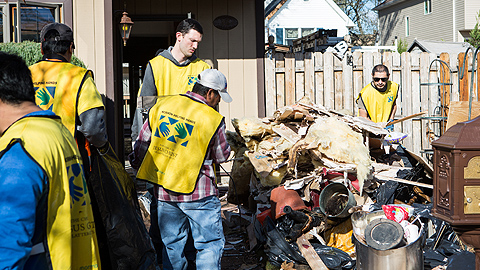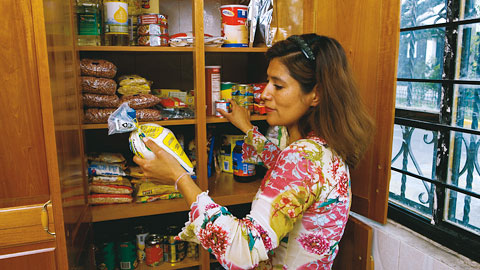New Guide Helps Wards, Stakes Prepare for Emergencies
Contributed By Tracy Allen, Welfare Services

The new Stake and Ward Emergency Preparedness Planning Guidepublished by the Church on ChurchofJesusChrist.org provides tools to help ward and stake leaders worldwide create or update their emergency response plans based on local resources and circumstances.
Article Highlights
- The Stake and Ward Emergency Preparedness Planning Guide helps leaders create or update emergency response plans.
Whether you’re a Primary teacher, home teacher, Relief Society president, or bishop, you would probably do a lot to keep the people you serve safe and healthy. In an emergency or disaster, preparedness is key. In those moments of chaos, a prepared ward and stake will be better equipped to make sure members are safe and accounted for.
The new Stake and Ward Emergency Preparedness Planning Guide published by the Church provides tools to help ward and stake leaders worldwide create or update their emergency response plans based on local resources and circumstances.
In the past, the Church has provided high-level principles about emergency preparedness as well as detailed, fill-in-the-blank plans. In both cases, some wards have been able to prepare well, but often, others struggle to plan for emergencies and respond effectively.
As Jeff Foy, LDS humanitarian response manager, explained, “This guide is designed to help stake and ward leaders go through the planning process on an ongoing basis. It is not meant to be a replacement to any existing plans or preparations. It was designed to augment whatever stakes and wards already have.”
Five steps of emergency preparations
The planning guide and accompanying workbook walk leaders through five steps of emergency preparations:
- Identify Likely Disasters
- Gather Critical Information
- Outline Assignments and Procedures
- Identify Emergency Communication Methods
- Encourage Member Preparation

By focusing on disruptions, stake or ward councils are better prepared for a variety of different disasters.
Focus on disruptions, not disasters
A major change in this emergency preparedness strategy is the focus on disruptions instead of disasters. Rather than making a plan for every potential disaster that could affect your congregation, by focusing on disruptions such as lack of shelter, food, communication services, or heating, which can occur during a variety of emergencies, the stake or ward council is prepared for any disaster that causes a particular disruption. If a council discusses and plans for a different disruption each month, they could have a thorough plan by the end of the year.
Identify special needs
Another key part of the guide is the section on gathering critical information. The workbook encourages leaders to identify where special needs are in the ward such as elderly members or members who require medication. With this information on hand, leaders can make sure any vital needs are met quickly in the case of a disaster.

The workbook encourages leaders to identify where special needs are in the ward.
While it might be tempting to create an exhaustive plan for every eventuality, the introduction to the plan states that “these plans should be brief and simple and are most effective when coordinated with community plans.”
Jeff Foy said of the plan, “The hope is not for one person to fill out the workbook by themselves and report that the plan is done. Because the dynamics of a ward and stake are constantly changing, we hope that stake and ward councils will regularly go through the process of updating their emergency preparedness plans. The process of planning is more important than the written plan itself.”
The Stake and Ward Emergency Preparedness Planning Guide is available at preparedness.ChurchofJesusChrist.org.
